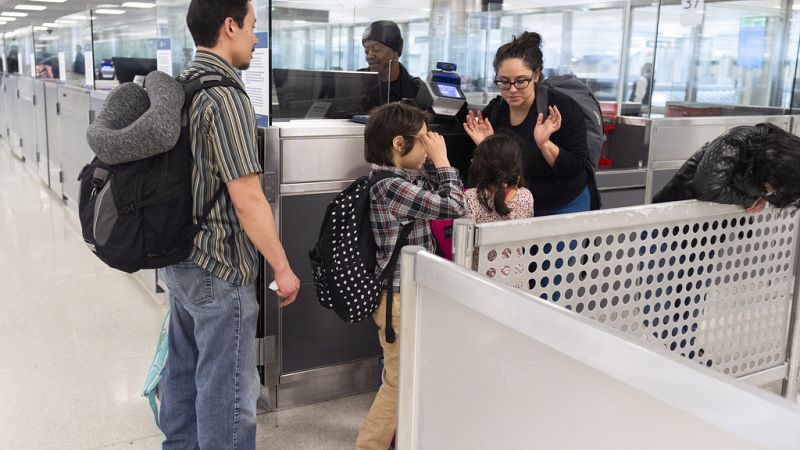
The much-delayed Entry/Exit System (EES) for the EU and Schengen Zone will finally begin a phased roll-out starting in October 2025.
Its aim is to digitise border crossings recording the entry and exit of non-EU nationals using biometric data like fingerprints and facial scans. It will also record data like personal information, passport details, travel documents and visa status.
For non-EU citizens who don't need a visa to enter the EU, the launch of the EES comes alongside the introduction of the ETIAS - the European Travel Information and Authorisation System - as part of the EU’s efforts to improve border security.
This new electronic travel authorisation system is due to be introduced in last quarter of 2026 with a transitional grace period, meaning it won’t be mandatory until 2027.
What is the ETIAS?
Under the new ETIAS rules, travellers who don’t need a visa from non-EU countries, including the UK, Australia, the US and Canada, will have to obtain authorisation before short stays in the Schengen Area.
This will require you to complete an online application, provide personal details, answer security questions ad pay a fee. This authorisation will be linked to the traveller’s passport and will be valid for three years or until the passport expires.
Travellers from 60 non-EU countries will need to comply with the ETIAS, but there are some exceptions. The fee will be waived for children under 18 and adults over 70, although they will still need to apply for authorisation.
It will apply to 30 European countries - all EU states except Ireland plus Iceland, Norway, Liechtenstein and Switzerland.
How much will the ETIAS cost?
Travellers will have to pay a fee when they apply for the ETIAS. This was initially established as €7 but EU has now proposed an increased cost of €20 per application - almost triple the original fee.
The European Commission has said the price hike reflects inflation and additional operational costs like technical features integrated into the system.
"It will also bring the cost for a travel authorisation to the EU in line with similar travel authorisation programmes such as the UK Electronic Travel Authorisation (ETA) and the US Electronic System for Travel Authorization (ESTA)," it said.
Applicants under 18 or over the age of 70 at the time of application will be exempt from this fee. Family members of EU citizens and family members of non-EU nationals who have the right to move freely throughout the EU will also be exempt, according to the Commission.
When will travellers have to apply for the ETIAS?
The ETIAS won't be introduced until the EES comes into force. This was initially slated for November 2024 but it has been much delayed.
Installing the new technology required for the EES has been dogged by complications and delays, with dozens of member states not ready for the planned launch.
The EES rollout will begin in October 2025, with gradual implementation across Schengen countries, and full deployment expected by April 2026. The ETIAS can only function once this entry/exit system is fully working meaning its launch date has also been pushed back.
It has said the ETIAS will start operations in the last quarter of 2026, with a specific date for the launch of the system coming a few months before. Even then it will remain voluntary for a further six months, meaning travellers may not have to pay the fee until well into 2027.







